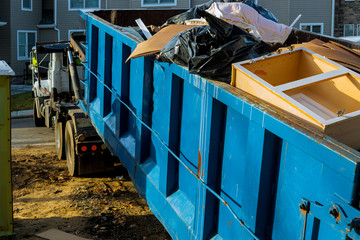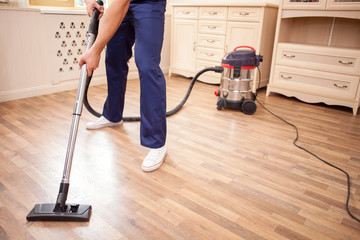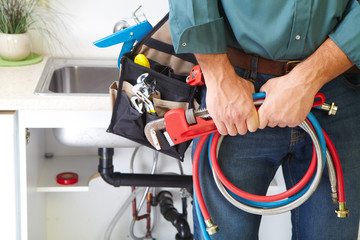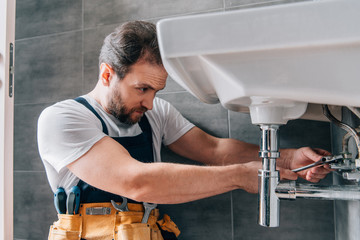Junk Haulers Louisville KY have the manpower and equipment to tackle junk removal jobs of all sizes. Whether you need to clear out a small room or dispose of a large commercial building, they have the expertise to get the job done quickly and efficiently.

They will assess the items you want removed and quote based on how much space they think your junk will take up in their truck. This process minimizes injury to their crew and damage to your property.
Junk removal companies save you a lot of time because they take care of the heavy lifting and disposing of your junk for you. This means that you can spend less time worrying about what to do with your old stuff and more time on other important things. Junk hauling services also help you get rid of your unwanted items in one go, which can be helpful if you have a lot of clutter or large bulky furniture that needs to be removed.
Using junk removal services can help you save money because it can be expensive to rent a truck and pay for disposal fees when you need to get rid of a large amount of junk. Junk removal companies are able to offer affordable junk disposal options because they have the right equipment and manpower to handle large volumes of waste at once.
You can save more money by choosing junk removal services that offer discounts for certain types of waste. For example, some junk removal companies may offer a discount on the cost of getting rid of asbestos, mercury, fluorescent light bulbs, batteries, aerosol cans, and paints (lead or latex). This way, you can get rid of your unwanted items without spending too much money.
Calculating profit margins is a crucial part of running any business, and junk removal is no exception. You should calculate your costs by determining the fixed expenses – such as truck payments, insurance, and licensing fees – as well as the variable expenses – such as fuel, labor, and marketing. Once you have your total costs, add a markup to determine your profit.
There are different types of junk removal services available, but the most common is full-service junk removal. In this type of service, a junk removal company will send 2-3 people to your home or office and remove all of your unwanted items. They will then load the junk into their truck and haul it away forever. This option is ideal for large-scale clean-ups, like post-renovation junk removal. However, it can be expensive because the junk removal company must pay for disposal services and labor.
Safe
Junk removal companies offer labor and trucks/equipment to conveniently clear out non-hazardous unwanted household or commercial (offices, cafes, restaurants, construction sites) items that are too large, heavy or dangerous for the client to transport themselves. They then take it away to donate, recycle or properly dispose of it. This saves the customer time and effort, reduces environmental impact and makes for a cleaner, less cluttered space.
While a junk removal company can be more costly than renting a dumpster and doing it yourself, they’re much safer and provide greater value. Removing large and heavy items is risky for inexperienced individuals, as they can damage property or cause serious injury to themselves. Professional junk haulers are trained to safely move and dispose of large, bulky items without causing harm to themselves or your property.
Full service junk removal companies also sort through your items to recycle or donate them, minimizing landfill waste and making a difference in the community. They also know how to handle hazardous items and comply with local/state environmental regulations.
The best way to find a junk removal company is to ask for referrals from friends/family or do an online search. Look for a company with a good reputation, competitive pricing and reliable service. You should also ensure they have proper state licensing and waste disposal/transportation permits, and carry insurance to protect yourself against damages or injuries during the junk removal process.
Some rogue junk removal companies will lure you in with a low quote over the phone or internet, then dramatically increase the price once they arrive on-site. They may even try to charge you bogus fuel or “environmental” surcharges. To avoid this, get a detailed and binding written estimate before hiring anyone.
Junk removal services are more efficient and cost-effective than movers for clearing out unwanted items during a move, renovation or estate cleanout. However, it’s important to understand the differences between the two services so that you can make an informed decision about which one is right for you.
Eco-Friendly
Professional junk haulers use advanced waste management practices to recycle and dispose of unwanted items. They have access to specialized trucks and vehicles that can safely transport large, heavy items without causing damage. They also take the time to sort through your junk and identify anything that could be donated or repurposed, keeping it out of landfills and supporting sustainability efforts.
Cluttered living spaces and offices are not only aesthetically unpleasing; they can also drain your energy, making it difficult to focus. Junk removal services are able to clear out your space quickly and easily, helping you get back your peace of mind and allowing you to focus on more productive tasks.
Junk Haulers are also environmentally conscious, donating and recycling as much as possible to ensure your junk doesn’t end up in landfills. When selecting a junk removal service, be sure to choose one that is certified green and offers transparent waste disposal processes. Check out their policies to find out what types of items they recycle, donate, and repurpose. They may even have special arrangements with local charities or community organizations that they work with.
Getting rid of unwanted items is great for the environment, but it’s not enough to reduce your environmental impact. To truly make an eco-friendly difference, you must also commit to a zero-waste lifestyle. This means eliminating all unnecessary purchases, reducing your use of single-use plastics, and recycling everything you can.
Reputable junk removal companies will do their best to recycle as much as they can, avoiding landfills entirely. Be sure to ask them how much of your junk they can recycle, and look for one that’s willing to be transparent about their process. They can tell you how much of your junk is donated or recycled, and they can even offer e-waste recycling for those hard-to-recycle electronics. They can also tell you how they reduce fuel consumption by optimizing routes and minimizing load weights. They might even have a special truck that converts to electric power. This is a huge step towards a greener future!
Hassle-Free
Junk Haulers are a convenient and hassle-free way to get rid of unwanted items. You can schedule a pickup time and leave the rest to the junk removal experts. They will come to your location with a truck fitted with a dumpster, load all of your junk into the dumpster and haul it away. This is a great option for large jobs like post-renovation clean-ups.
They also take care of hazardous waste and regulated items that require special disposal. In addition, they have extensive knowledge of local regulations and will make sure that your junk is disposed in accordance with all laws and guidelines. This means that you don’t have to worry about safety or environmental issues.
Another benefit of hiring Junk Haulers is that they are a cost-effective solution to your waste management needs. They will save you the time and effort of sorting through your waste and removing it from your premises, saving you valuable resources in the long run. In addition, they will also provide you with an accurate estimate before starting the work to minimize any surprises down the road.
The physical transformation that occurs as a result of junk removal is immeasurable. From the cluttered garage to the chaotic office, junk removal can bring a sense of order and clarity to your living spaces, allowing you to move around more easily. This can improve relationships with family members and roommates, and foster a more positive environment for everyone.
Junk removal is a tedious and difficult task that can be overwhelming for many people. Whether it is from a home or business, the accumulation of clutter can be stressful and frustrating. Junk removal services can ease the stress by reducing the amount of junk in your property. With their help, you can regain control of your space and live a healthier, more productive life. Contact a local junk removal service today to schedule an appointment and remove your clutter for good. They offer same-day services so you can enjoy a more peaceful and organized lifestyle in no time.
















